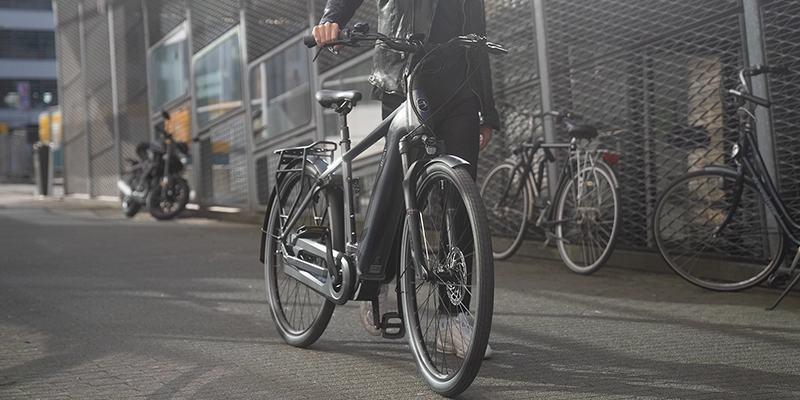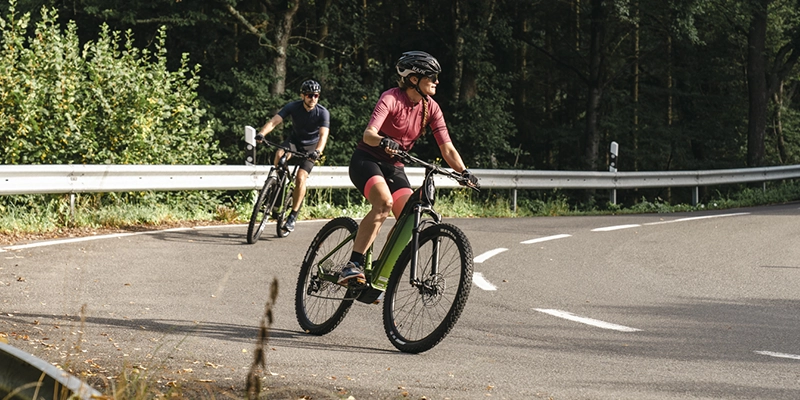Cycling and walking are healthy. They are both good ways to work on your condition and your health in general. Doctors and other health professionals often advise their patients to walk or cycle more for good reason. But which is better to do? Which is healthier, biking or walking? This question will be answered today.
The Range of Electric Bicycles (e-bikes)
Picture this: a sunny day beckons, promising new adventures. Your choice of transport? Not a car, but a bicycle, of course! Nothing compares to the freedom of cycling in the great outdoors. You can enjoy the landscape at your own pace, pause whenever something catches your eye, and still reach your destination.


Exploring with an E-Bike
One of the key benefits of an e-bike over a traditional bicycle is the extended range you can cover in a single day. With less physical exertion required, you can ride for longer periods. The pedal assistance makes the whole experience more enjoyable, allowing you to tackle even the most challenging terrains and headwinds that would have been difficult on a regular bike. Now, with an e-bike, no destination is out of reach.
The Growing Popularity of E-Bikes
E-bikes are gaining traction for a reason: they make long-distance cycling almost effortless. Whether you’re facing headwinds or steep hills, an e-bike takes the strain off, allowing you to enjoy the journey. And let’s not forget, even with the added assistance, you’re still getting a full-body workout.
Choosing the Right E-Bike for Leisure Rides
When selecting an e-bike for recreational use, there are several factors to consider:
- Frame Size: If you’re planning long rides, comfort is key. The right frame size can make or break your experience. A reputable BESV dealer can help you find the perfect fit.
- Motor Placement: Where would you prefer the motor—front, middle, or rear? Each location has its pros and cons.
- Weight: If you have limited storage space, difficulty lifting heavy objects, or plan to transport the bike frequently, opt for a lighter model.
- Battery Capacity: For longer rides, go for an e-bike with a high-capacity battery. If you’re sticking to shorter distances, you can save money with a lower-capacity battery.
Note: BESV provides an estimated range for a fully charged battery. However, these estimates are based on ideal conditions. Real-world factors like terrain and weather can reduce this range.
- Storage Solutions: Don’t overlook the importance of panniers. You’ll likely want to carry some essentials, and a backpack may not always be the most convenient option

The Looks of Your E-Bike
While performance and comfort are crucial, the appearance of your e-bike shouldn’t be overlooked. Riding a bike that not only performs well but also looks good adds to the overall experience. Plus, a unique-looking bike is easier to spot in a sea of parked bicycles.
Understanding the Range of an Electric Bicycle
One of the most frequently asked questions about e-bikes is their range—how far can you go on a full battery? The range of an electric bike is the distance you can cover with pedal assistance until the battery is depleted. This is an essential factor to consider when shopping for a new e-bike.
Calculating the Range of Your E-Bike
Just like electric cars, e-bikes have a battery and a motor, which means they have a range. This range can be estimated based on the battery capacity, which is the maximum amount of energy the battery can store. By also considering other variables like the level of pedal assistance you use, your cycling speed, and weather conditions, you can get a fairly accurate estimate of your e-bike’s range.
So, when you’re in the market for a new e-bike, don’t just focus on the battery capacity. Take into account all these factors to make an informed decision that suits your specific needs.


Battery Capacity Divided By Six
A useful rule of thumb for estimating your e-bike’s average range is to divide the battery capacity (measured in Wh) by six. For instance, if your e-bike has a 300 Wh battery, you can roughly expect a range of about 50 km. Below is a table that outlines the average range for some of our e-bike models. You can use these distances as a guideline when cycling under ‘normal’ conditions. So you cycle about 20 to 25 km/h on a flat road, with the pedal assistance on medium. It is about 15 degrees Celsius and the wind blows at force 3 or 4.
Range of e-bike depends on several factors
In addition to the battery capacity, as mentioned, there are quite a few factors that determine exactly how far you will get on your e-bike. This is easy to understand by considering that cycling on an old-fashioned bike also costs more or less energy, depending on the circumstances. With an e-bike, the pedal assistance pedals with you, as it were, and the battery provides the energy for this. If something causes you to tire more quickly on a regular bike, it will also cause the battery of your e-bike to run out of power sooner, reducing the range. There is of course one exception to this, and that is the setting on which you put the pedal assistance.
Factors Affecting E-Bike Range
While battery capacity is a significant factor, several other variables can influence your e-bike’s range. Think of it this way: riding a traditional bike can be more or less energy-consuming depending on various conditions. Similarly, with an e-bike, the pedal assistance supplements your pedaling effort, and the battery provides the energy for this assistance. If certain conditions make you tire more quickly on a regular bike, those same conditions will deplete your e-bike’s battery faster, thereby reducing its range. The only exception to this rule is the level of pedal assistance you choose, which you can adjust to extend or reduce your e-bike’s range.
So, when considering an e-bike, it’s crucial to take into account not just the battery capacity but also how different factors like terrain, weather, and your riding style can affect its range.
Pedal Support Settings
With BESV e-bikes, you have the flexibility to adjust the level of pedal support according to your needs. Setting it higher will reduce the effort you need to put into pedaling, but it will also drain the battery more quickly. If you’re aiming for maximum range, it’s advisable to set the pedal support to the lowest level.
Impact of Speed on Range
Your cycling speed significantly affects the e-bike’s range. Higher speeds will deplete the battery more quickly due to increased air resistance. On average, if you cycle at speeds of 20 to 25 km/h, you can expect the range to align with the estimates provided earlier. To maximize your battery’s range, consider cycling at a slower speed.
Weather Conditions
A strong headwind will considerably reduce your e-bike’s range, while a tailwind will extend it. Temperature also plays a role; batteries tend to perform less efficiently in extreme heat or cold. For optimal performance and range, it’s best to use your e-bike in temperatures ranging from 5 to 25 degrees Celsius.
Terrain and Rider Weight
Just like a car, an e-bike uses more energy when accelerating. If you’re riding on uneven or curvy terrains like in the woods, or if you’re using the bike for short city rides with frequent stops, expect a reduced range. Your own weight also affects the e-bike’s range; heavier riders will generally experience a slightly shorter range.
By considering these factors, you can make an informed decision about how to maximize the range of your e-bike and enjoy a more efficient and enjoyable riding experience.





